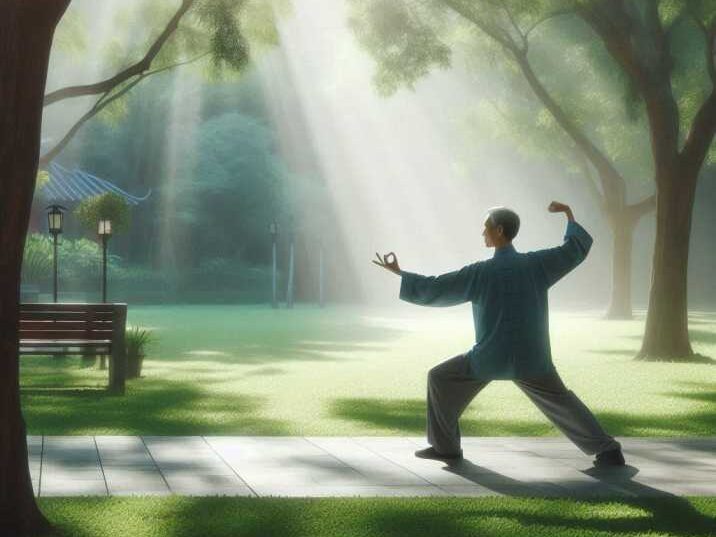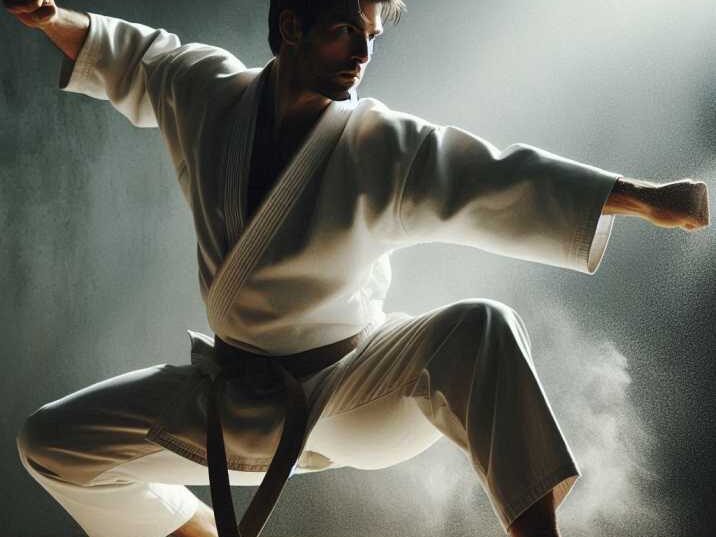Martial arts often conjure images of fast kicks, intense sparring, and powerful punches. However, not all martial arts focus on combat. Some are designed to promote peace, balance, and self-defense without causing harm. In this article, we will explore peaceful martial arts—forms of martial arts that emphasize discipline, mental focus, and self-improvement over aggression. Training in these martial arts can build concentration and discipline, which in turn can improve focus in school and other activities. Whether you’re a student interested in martial arts or simply curious, this guide will explain peaceful martial arts in a way that’s fun and easy to understand.
Introduction to Peaceful Martial Arts
Table of Contents
Martial arts are systems of techniques used for self-defense, exercise, and sometimes competition. But not all martial arts are about fighting or violence. Some focus on inner peace, personal growth, and harmony with others. Peaceful martial arts use techniques that avoid injury while teaching practitioners how to protect themselves, stay calm, and develop self-control. Many of these practices come from ancient traditions and have been passed down for centuries.
Characteristics of Peaceful Martial Arts
Peaceful martial arts differ from other forms in their focus on non-violence, meditation, and mindfulness. Here’s what makes them unique:
- Non-aggressive Techniques:
- Peaceful martial arts emphasize defensive techniques over offensive moves. The goal is to protect oneself without harming the attacker. These practices teach methods of deflecting or neutralizing aggression while maintaining calmness and control, ensuring that violence is avoided.
- Inner Peace:
- A key focus of peaceful martial arts is cultivating inner calmness. Through meditation and mindfulness practices, students learn to stay composed under pressure, developing emotional balance and resilience. This focus on self-awareness helps practitioners respond to stressful situations with a calm mind.
- Mind-Body Connection:
- Peaceful martial arts are designed to strengthen the connection between the mind and body. The slow, controlled movements synchronize mental and physical efforts, promoting better balance, flexibility, and focus. This mind-body harmony helps practitioners become more centered and focused in daily life.
- Self-Discipline:
- These martial arts require regular practice and dedication, helping students develop strong self-discipline. The patience and effort needed to master the techniques can spill over into other aspects of life, like school, work, or personal achievements, improving focus and commitment.
- No Sparring or Competition:
- Unlike other martial arts that involve combat or competition, peaceful forms avoid physical fights. Instead, the emphasis is on personal growth, self-improvement, and working with others harmoniously. This approach focuses on developing skills for self-betterment rather than proving superiority over others.
Popular Peaceful Martial Arts
1. Tai Chi
Tai Chi is an ancient Chinese martial art that focuses on slow, deliberate movements. Often practiced in parks or peaceful environments, Tai Chi is sometimes called “meditation in motion.” While it has roots in self-defense, it is mostly practiced today for its health benefits.

- Focus on Balance and Flexibility: The slow movements of Tai Chi help improve balance and flexibility, making it a great martial art for people of all ages.
- Mental Clarity: Tai Chi encourages practitioners to focus on each movement, promoting relaxation and mental clarity.
- Health Benefits: Tai Chi can improve posture, and breathing, and reduce stress. Some studies suggest it may help lower blood pressure and improve heart health.
2. Aikido
Aikido is a Japanese martial art that focuses on redirecting an opponent’s energy rather than meeting force with force. It emphasizes harmony and non-aggression.
- Deflecting Attacks: Rather than blocking or striking, Aikido practitioners deflect an attacker’s force, often using throws and joint locks.
- Philosophy of Peace: Aikido is grounded in the belief that violence should be avoided, and practitioners aim to neutralize threats without harming others.
- Self-Control: Aikido teaches self-discipline and control, encouraging practitioners to remain calm under pressure.

3. Judo
Judo is another peaceful martial art from Japan. Although it is often practiced in competition, its techniques focus on control rather than striking or harming an opponent.
- Throwing Techniques: Judo practitioners use balance and leverage to throw their opponents safely to the ground.
- Focus on Respect: In Judo, respect for one’s partner is essential, and practitioners bow to each other before and after practice.
- No Strikes: Judo focuses on grappling, making it a peaceful art that avoids punches and kicks.
4. Brazilian Jiu-Jitsu (BJJ)
While Brazilian Jiu-Jitsu (BJJ) involves ground fighting and submission techniques, it is often considered peaceful because it teaches how to neutralize larger opponents without causing harm.
- Leverage Over Strength: BJJ relies on technique and leverage rather than brute strength, making it an art where smaller people can successfully defend themselves.
- Control and Restraint: The goal of BJJ is to control an opponent’s movements and apply submission holds, such as chokes or joint locks, without causing serious injury.
- Self-Improvement: BJJ practitioners focus on continuous improvement and humility, often learning valuable life lessons about patience and perseverance.
5. Capoeira
Capoeira is a unique martial art from Brazil that blends music, dance, and acrobatics with self-defense techniques. Although it can be used for self-defense, Capoeira is often practiced in a playful, non-violent manner.
- Fluid Movements: Capoeira involves circular, flowing movements that resemble dance, and practitioners often “play” with each other rather than fight.
- Cultural Significance: Capoeira is steeped in Afro-Brazilian culture and is often practiced to the rhythm of traditional music.
- Building Community: Capoeira emphasizes community and respect among practitioners, often encouraging teamwork rather than competition.
Benefits of Practicing Peaceful Martial Arts
- Improved Focus: Peaceful martial arts, like Tai Chi or Aikido, demand mental concentration during practice. The focus needed to perform each movement helps improve attention and discipline, which can carry over into other areas of life, such as school, sports, or hobbies.
- Stress Relief: The slow, flowing movements and breathing exercises in peaceful martial arts promote relaxation. These practices reduce tension and anxiety, offering a natural way to manage stress, much like meditation or yoga.
- Physical Fitness: Practicing peaceful martial arts enhances flexibility, balance, and muscle strength. Although not as intense as other forms of exercise, the consistent, controlled movements still provide a full-body workout that improves overall fitness and health.
- Confidence and Self-Respect: Learning peaceful self-defense techniques helps boost confidence. Practitioners become more self-assured in their ability to handle challenging situations, all while developing a deep sense of self-respect and respect for others.
- Enhanced Mindfulness: Peaceful martial arts teach mindfulness by encouraging students to stay in the present moment. Practitioners learn to focus on their movements and breathing, which helps them become more aware of their thoughts and reactions, improving emotional control and reducing impulsive behavior.
Table of Information on Peaceful Martial Arts
| Martial Art | Country of Origin | Key Focus | Primary Benefit |
|---|---|---|---|
| Tai Chi | China | Balance and calm | Mental clarity |
| Aikido | Japan | Redirecting energy | Self-control |
| Judo | Japan | Grappling | Respect and discipline |
| Brazilian Jiu-Jitsu | Brazil | Ground Defense | Leverage and control |
| Capoeira | Brazil | Dance and self-defense | Community and fluidity |
Conclusion
Peaceful martial arts offer a unique way to train the mind and body without focusing on violence or aggression. From the flowing movements of Tai Chi to the community-based culture of Capoeira, these martial arts are about much more than just self-defense. They promote discipline, respect, and mindfulness, all while helping practitioners stay physically active and mentally sharp. If you’re looking for a martial art that focuses on peace, balance, and personal growth, one of these might be the perfect fit for you!
FAQs
1. What is the most peaceful martial art?
Tai Chi is considered the most peaceful martial art due to its focus on slow, gentle movements and meditation.
2. Can peaceful martial arts still help in self-defense?
Yes, peaceful martial arts like Aikido and Judo teach effective self-defense techniques that avoid causing harm.
3. Is Brazilian Jiu-Jitsu a peaceful martial art?
While BJJ involves ground fighting, its emphasis on control over strength makes it a peaceful form of martial art.
4. Do peaceful martial arts have health benefits?
Yes, peaceful martial arts improve flexibility, balance, and mental focus, and can reduce stress.
5. Can children practice peaceful martial arts?
Absolutely! Many peaceful martial arts are great for kids as they teach discipline, focus, and respect.


